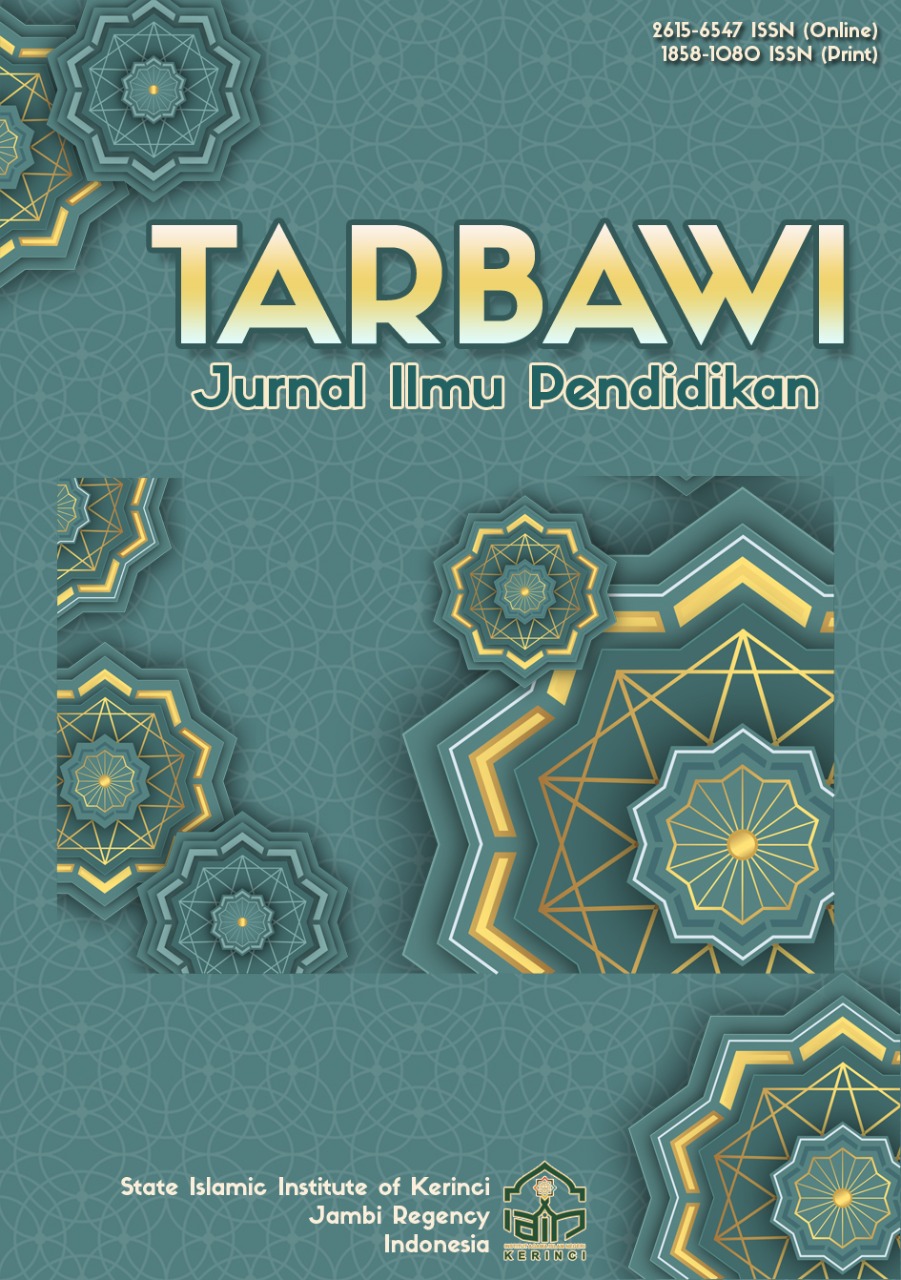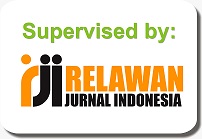The Pedagogical Impact of Technological Innovations on Qur'anic Learning: A Systematic Literature Review
DOI:
https://doi.org/10.32939/tarbawi.v21i1.4426Keywords:
Mobile Learning App, Online Quran Learning, Technology for Quran learningAbstract
This study aims to provide an overview of research trends, forms of implementation, and the impact of using technology in learning al-Qur'an. This research used the Systematic Literature Review method according to PRISMA guidelines. Watase Uake and Publish or Perish tools were used to search for articles with relevant keywords, resulting in 139 articles. After the identification, screening, and eligibility assessment process, 25 articles indexed in Q1, Q2, Q3, Q4, Sinta 1, and Sinta 2 were selected to be thematically mapped and analyzed. The results showed that 1) the main trends of the research include the development and use of innovative technologies in adaptive and interactive learning of al-Qur'an; 2) The use of technology is carried out by integrating various applications, platforms, and advanced systems in various aspects of Qur'anic learning; 3) the impact of using technology is shown by the inclusiveness of learning and the improvement of learning aspects comprehensively, while still involving the role of teachers to create meaningful learning. This research contributes to providing insights into the potential of technology to improve the effectiveness and quality of Quranic learning in various educational contexts.
Downloads
References
Abdullah, N. A., Temyati, Z., & Mamat, M. N. (2021). Technology-Related Tahfiz Al-Quran Learning in Malaysia: A Systematic Literature Review. Sains Insani, 6(3).
Affandi, L., Rahmat, M., & Supriadi, U. (2021). A Thematic Digital Quran Learning Model in Islamic Religious Education. Jurnal Pendidikan Islam, 7(2), 181–194. https://doi.org/10.15575/jpi.v7i2.15062
Al-Fadhli, S., Al-Harbi, H., & Cherif, A. (2023). Speech Recognition Models for Holy Quran Recitation Based on Modern Approaches and Tajweed Rules: A Comprehensive Overview. International Journal of Advanced Computer Science and Applications, 14(12), 961–974. https://doi.org/10.14569/IJACSA.2023.0141297
Alqahtani, M., & Fayyoumi, A. (2015). Mobile application development for quran verse recognition and interpretations. International Journal of Interactive Mobile Technologies, 9(1), 19–22. https://doi.org/10.3991/ijim.v9i1.4171
Alsharbi, B. M., Mubin, O., & Novoa, M. (2021). Quranic education and technology: Reinforcement learning system for non-native Arabic children. Procedia Computer Science, 184, 306–313. https://doi.org/10.1016/j.procs.2021.04.007
Alsharbi, B. M., Mubin, O., Novoa, M., Alsharbi, B. M., Mubin, O., & Novoa, M. (2021). Quranic Education and Technology: Reinforcement learning System for Arabic Children for Non-Native Arabic Children. Procedia Computer Science, 184(2019), 306–313. https://doi.org/10.1016/j.procs.2021.04.007
Alsharbi, B., Mubin, O., & Novoa, M. (2021). Testing Phase of Reinforcement learning System designed for Quranic Education for Non-Native Arabic Children. Procedia Computer Science, 191, 160–167. https://doi.org/10.1016/j.procs.2021.07.042
Anam, C., & Rusydiyah, E. F. (2021). Utilization of E-Learning in Optimizing Madrasah Al-Quran and Al-Hadith Learning. Jurnal Pendidikan Islam Indonesia, 6(1), 16–22. https://doi.org/10.35316/jpii.v6i1.327
Aripudin, A. (2023). When Quranic Learning Goes Online: The Phenomenon of Yusuf Mansur in Da’wah Marketing Facing the Covid-19 Pandemic. Ilmu Dakwah: Academic Journal for Homiletic Studies, 17(1), 1–18. https://doi.org/10.15575/idajhs.v17i1.23272
Awang, H., Zakaria, M. Z., Al-Mashhadani, A. F. S., Mustapha, R., Yaakob, M. F. M., Yusof, A. M., Ramli, N., Rasdi, M. N. A., Jafar, M. F., Nawi, A., Zain, F. M., & Kasim, M. (2022a). Tarannum Smart Learning Application: Embracing the beauty of tarranum through multimedia technology. International Journal of Evaluation and Research in Education, 11(2), 897–906. https://doi.org/10.11591/ijere.v11i2.22388
Awang, H., Zakaria, M. Z., Al-Mashhadani, A. F. S., Mustapha, R., Yaakob, M. F. M., Yusof, A. M., Ramli, N., Rasdi, M. N. A., Jafar, M. F., Nawi, A., Zain, F. M., & Kasim, M. (2022b). Tarannum Smart Learning Application: Embracing the beauty of tarranum through multimedia technology. International Journal of Evaluation and Research in Education, 11(2), 897–906. https://doi.org/10.11591/ijere.v11i2.22388
Aziz, M. M., Abdullah, W. M., Ahmad, A. M., Mushim, M. A. A., & Shahrudin, M. S. (2019a). Comparison between conventional method and modern technology in Al-Qur’an memorization. International Journal of Recent Technology and Engineering, 8(1), 289–294.
Aziz, M. M., Abdullah, W. M., Ahmad, A. M., Mushim, M. O., & Shahrudin, M. S. (2019b). Comparison between conventional method and modern technology in Al-Qur’an memorization. International Journal of Recent Technology and Engineering, 8(1), 289–294. https://www.scopus.com/inward/record.uri?eid=2-s2.0-85067978321&partnerID=40&md5=793bdcc6a088aac3db89215e63918544
Bensman, S. J. (2011). Anne-Wil Harzing: The publish or perish book: Your guide to effective and responsible citation analysis. Scientometrics, 88(1), 339–342. https://doi.org/10.1007/s11192-011-0388-8
Brata, K. C., Nugraha, M. H., & Brata, A. H. (2022). An alternative m-learning scoring approach to automatically evaluate Iqro’s pronunciation based on pitch, volume, and rhythm features. International Journal of Electrical and Computer Engineering, 12(5), 5313–5320. https://doi.org/10.11591/ijece.v12i5.pp5313-5320
Faidah, M., Makrufah, S., Muntazeri, E. N., & Muntazeri, S. N. (2023). Digitalization of the Quranic Reading Learning Program for Collage Students, Indonesia †. Engineering Proceedings, 55(1), 1–7. https://doi.org/10.3390/engproc2023055076
Fitria, N., Usman, M., & Sahara, N. (2023). Duolingo Application for Advancing English Speaking Skills. Journal of Innovation in Educational and Cultural Research; Vol 4, No 4 (2023)DO - 10.46843/jiecr.v4i4.630 . https://jiecr.org/index.php/jiecr/article/view/630
Ghozali, M., Mursyid, A. Y., & Fitriana, N. (2022a). Al-Qur’an (Re)Presentation in the Short Video App Tiktok: Reading, Teaching, and Interpretive. Pertanika Journal of Social Sciences and Humanities, 30(3), 1263–1282. https://doi.org/10.47836/pjssh.30.3.18
Ghozali, M., Mursyid, A. Y., & Fitriana, N. (2022b). Al-Qur’an (Re)Presentation in the Short Video App Tiktok: Reading, Teaching, and Interpretive. Pertanika Journal of Social Sciences and Humanities, 30(3), 1263–1282. https://doi.org/10.47836/pjssh.30.3.18
Granić, A. (2022). Educational Technology Adoption: A Systematic Review. Education and Information Technologies, 27(7), 9725–9744. https://doi.org/10.1007/s10639-022-10951-7
Hanafi, Y., Hendrawan, H. J., & Hakim, I. N. (2019). Accelerating Qurán Reading Fluency through Learning Using QURÁNI Application for Students with Hearing Impairments. International Journal of Emerging Technologies in Learning (iJET), 14(06), 110. https://doi.org/10.3991/ijet.v14i06.9863
Hijriyah, L., Alias, A., & Mohd Sahabuddin, M. F. (2024). Exploring walkability research trends based on systematic literature review (SLR) by applying PRISMA. Open House International, 49(1), 63–121. https://doi.org/10.1108/OHI-02-2023-0031
Ibrahim, M. A. (2020). E-Learning of Tafsir Al-Quran Course: A Study on Students’ Satisfaction towards Teaching Techniques and Assessment Methods. Advances in Social Sciences Research Journal, 7(10), 261–268. https://doi.org/10.14738/assrj.710.9229
Isa, N. H. M., Aziz, N. H. A., Ishak, M., Mustafa, W. A., & Rahman, M. N. A. (2024). Quran Mobile Application: A Structured Review. Journal of Advanced Research in Applied Sciences and Engineering Technology, 34(2), 117–132. https://doi.org/10.37934/araset.34.2.117132
Khairuldin, W. M. K. F. W., Yusof, M. Y. Z. M., Rahman, M. N. A., Mat Deris, M. S., Rahman, A. A., Adam, F., Ismail, D., & Fauzi, N. (2017). Learning Al-Quran Based on Mobile Learning (M-Learning): A Literature Review. International Journal of Academic Research in Business and Social Sciences, 7(4), 70–80. https://doi.org/10.6007/ijarbss/v7-i4/2780
Lin, M. H., Chen, H. C., & Liu, K. S. (2017). A study of the effects of digital learning on learning motivation and learning outcome. Eurasia Journal of Mathematics, Science and Technology Education, 13(7), 3553–3564. https://doi.org/10.12973/eurasia.2017.00744a
Mackey, T. P., & Aird, S. M. (2021). Integrating Metaliteracy into the Design of a Collaborative Online International Learning (COIL) Course in Digital Storytelling. Open Praxis, 13(4), 397–403. https://doi.org/10.55982/openpraxis.13.4.442
Mujib, A., & Marhamah, M. (2020a). Al-Qur`an Learning Innovation Based on Blended Cooperative e-Learning in School. Journal of Educational and Social Research, 10(4), 47. https://doi.org/10.36941/jesr-2020-0063
Mujib, A., & Marhamah, M. (2020b). Al-Quràn learning innovation based on blended cooperative e-learning in school. Journal of Educational and Social Research, 10(4), 47–54. https://doi.org/10.36941/JESR-2020-0063
Nigar, N., Wajid, A., Ajagbe, S. A., & Adigun, M. O. (2023a). An Intelligent Framework Based on Deep Learning for Online Quran Learning during Pandemic. Applied Computational Intelligence and Soft Computing, 2023, 1–9. https://doi.org/10.1155/2023/5541699
Nigar, N., Wajid, A., Ajagbe, S. A., & Adigun, M. O. (2023b). An Intelligent Framework Based on Deep Learning for Online Quran Learning during Pandemic. Applied Computational Intelligence and Soft Computing, 2023. https://doi.org/10.1155/2023/5541699
Purbohadi, D., Rahmawati, B. R. N., & Setiyawan, H. (2019). Development of Qur’an Memorization Learning Model Based on Mobile Learning. Journal of Physics: Conference Series, 1381(1), 012029. https://doi.org/10.1088/1742-6596/1381/1/012029
Puspitasari, N. S., Rochmad, R., & Muriyatmoko, D. (2020). Preliminary Study of Development of Mobile Learning Laboratorium Tafsir Sains (Labtafsin). At-Ta’dib, 15(2), 145. https://doi.org/10.21111/at-tadib.v15i2.4856
Rashid, N. R. R., Venkat, I., Damanhoori, F., Mustaffa, N., Husain, W., & Khader, A. T. (2015). Towards Automating the Evaluation of Holy Quran Recitations: A Pattern Recognition Perspective. Proceedings - 2013 Taibah University International Conference on Advances in Information Technology for the Holy Quran and Its Sciences, NOORIC 2013, 424–428. https://doi.org/10.1109/NOORIC.2013.88
Romadhon, S., Rahmah, A., & Wirani, Y. (2019). Blended learning system using social media for college student: A case of tahsin education. Procedia Computer Science, 161, 160–167. https://doi.org/10.1016/j.procs.2019.11.111
Rydén, L. (2015). Technological Development and Lifestyle Changes. In Sustainable Development, Knowledge Society and Smart Future Manufacturing Technologies (hal. 113–124). Springer. https://doi.org/10.1007/978-3-319-14883-0_8
Sarker, M. N. I., Wu, M., Cao, Q., Alam, G. M. M., & Li, D. (2019). Leveraging Digital Technology for Better Learning and Education: A Systematic Literature Review. International Journal of Information and Education Technology, 9(7), 453–461. https://doi.org/10.18178/ijiet.2019.9.7.1246
Shabrina, R., Chaeruman, U. A., & Tarjiah, I. (2021). Students’ Responses to Adapted Online Tahsin Quran Learning during the COVID-19 Pandemic. TARBIYA: Journal of Education in Muslim Society, 8(1), 57–65. https://doi.org/10.15408/tjems.v8i1.21715
Sutiyo, S., Masito, F., Nugraha, W., Komalasari, Y., & Brown, C. (2024). Using the E-Module in the Firefighting Course to Increase Cadetsâ€TM Motivation. Journal of Innovation in Educational and Cultural Research; Vol 5, No 1 (2024)DO - 10.46843/jiecr.v5i1.422 . https://jiecr.org/index.php/jiecr/article/view/422
Tiarawati, P. V., Nurhayati, S., Hidayah, S. N., & Boriboon, G. (2023). Blended Learning Approach Implementation to Improve Adults’ Tahsin Ability in the Digital Era. Cendekia: Jurnal Kependidikan dan Kemasyarakatan, 21(2), 180–196. https://doi.org/10.21154/cendekia.v21i2.7111
Tolchah, M., & Mu’ammar, M. A. (2019). Islamic Education in the globalization era; challenges, Opportunities, and contribution of islamic education in indonesia. Humanities and Social Sciences Reviews, 7(4), 1031–1037. https://doi.org/10.18510/hssr.2019.74141
Wahyudi, L. (2020). Tentang Watase Uake. Watase Uake Indonesia. https://www.watase.web.id/home/index.php
Yahya, M. W. B. H. M., Rahman, T., Siddiq, A. A., & Parihat, P. (2021). Online Learning in the Quran Reading Class during Covid-19 Pandemic. International Journal of Learning, Teaching and Educational Research, 20(5), 142–158. https://doi.org/10.26803/ijlter.20.5.8
Yamada, A. (2021). Japanese Higher Education. Journal of Comparative & International Higher Education, 13(1), 44–65. https://doi.org/10.32674/jcihe.v13i1.1980
Yasin, M. F. bin M., Embong, A. H., Khairuldin, W. M. K. F. W., Rahim, A., Abdullah, Sulaiman, R., Dollah, A., Said, S., & Mutalib, N. A. (2018). Contributions of technology towards development of Qur’anic Tajweed knowledge. International Journal of Civil Engineering and Technology, 9(6), 1340–1352.
Yeung, K. L., Carpenter, S. K., & Corral, D. (2021). A Comprehensive Review of Educational Technology on Objective Learning Outcomes in Academic Contexts. In Educational Psychology Review (Vol. 33, Nomor 4). Educational Psychology Review. https://doi.org/10.1007/s10648-020-09592-4
Yue, K. (2022). Breaking down the Barrier between Teachers and Students by Using Metaverse Technology in Education: Based on A Survey and Analysis of Shenzhen City, China. ACM International Conference Proceeding Series, 40–44. https://doi.org/10.1145/3514262.3514345
Zainuldin, S. N. B. M., Rahman, A. A., Zakaria, N. H. B., Iahad, N. A., & Bakri, A. B. (2017a). The effectiveness of MyFurqan for learning basic Al-Quran. 2016 IEEE Conference on e-Learning, e-Management and e-Services, IC3e 2016, 12–16. https://doi.org/10.1109/IC3e.2016.8009032
Zainuldin, S. N. B. M., Rahman, A. A., Zakaria, N. H. B., Iahad, N. A., & Bakri, A. B. (2017b). The effectiveness of MyFurqan for learning basic Al-Quran. 2016 IEEE Conference on e-Learning, e-Management and e-Services, IC3e 2016, 12–16. https://doi.org/10.1109/IC3e.2016.8009032
Zaki, Z. M., Ishak, S. F., & Mohamad, K. A. (2021). User Interface Designs of an Educational Mobile Application: A Study of Qiraat Teaching and Learning. Advances in Human-Computer Interaction, 2021, 1–11. https://doi.org/10.1155/2021/6648550
Zumaro, A. (2023). The Optimization of Quranic Reading And Writing: A Blended Learning Method On The Qur’an & Hadith Course At Min (State Islamic Elementary School) In Metro City, Lampung. Edukasi Islami: Jurnal Pendidikan Islam, 12(02), 1271–1290. https://doi.org/10.30868/ei.v12i02.3447
Downloads
Published
Issue
Section
License
Copyright (c) 2025 Nilna Fadlillah, Evi Fatimatur Rusydiyah, Moch Tolchah

This work is licensed under a Creative Commons Attribution-ShareAlike 4.0 International License.









